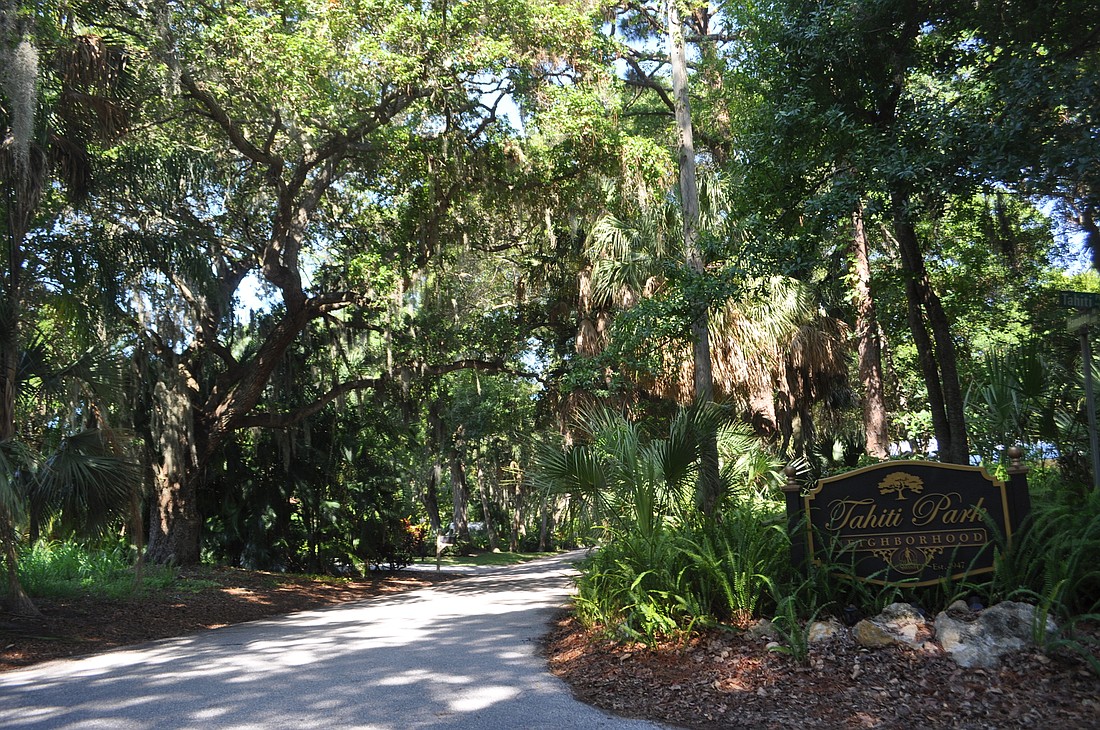- April 15, 2024
-
-
Loading

Loading

On March 21, a group assembled at City Hall to discuss the most effective way to protect, encourage and foster robust tree canopies lining residential streets in Sarasota neighborhoods.
It’s an ongoing challenge for the city. Residents of the Tahiti Park neighborhood, located just off North Tamiami Trail near 14th Street, have spent years asking officials to do more to prevent damage to the tree canopy that hangs above their substandard neighborhood road.
It’s part of the reason why, last year, the city decided to form a Tree Advisory Committee. Since December, that advisory board has worked its way through the city’s contentious tree protection regulations, hoping to find solutions that will satisfy both residents interested in preserving trees and private property owners who fear onerous regulations.
As the committee delved into the issue of canopy streets, it encountered a similar dichotomy. In 2017, the city discussed an ordinance that would create a canopy street designation for certain residential streets. It would offer enhanced protection for trees within a “canopy road zone,” including those planted up to 15 feet into private property next to the public right of way.
The goal, the board noted, was to discourage damage to trees on streets like the ones in Tahiti Park. But committee chairman Shawn Dressler, a landscape architect with Kimley-Horn, expressed concern the ordinance as written was overly restrictive.
Based on the input the committee has received to date, Dressler said he wanted the city’s regulations to be as flexible as possible when a private property owner had good intentions. He said the proposed ordinance would make it challenging to remove a tree from private property within a canopy road zone, even if the property owner had a plan to mitigate the removal with a quality tree.
Dressler outlined a potential alternative method for handling a canopy road ordinance. Instead of regulations prohibiting the removal of trees from a canopy road zone, he suggested the city could use existing tree protection funds to enhance the trees within the public right of way. That way, he said, it wouldn’t just protect existing neighborhood canopies — it could produce new canopies for other residential areas.
“It’s not just an ordinance about what you can’t do,” Dressler said. “It’s a program about what the city is going to do.”
Board member Mary Fuerst, a Tahiti Park resident, emphasized there were still existing issues residents wanted addressed through protective measures. City Commissioner Jen Ahearn-Koch, who previously served as president of the Tahiti Park Neighborhood Association, appeared at the March 21 meeting to explain the challenges the neighborhood is facing. Large trucks and other vehicles can damage branches and tree roots, she said.
The problem extends beyond the trees, too. There’s one way in and out of the neighborhood. Sometimes, Ahearn-Koch said, large trucks can pull in only to realize they can’t navigate the narrow streets — and they’re stuck there for hours as a result.
Dressler and other board members acknowledged the significance of that issue but said the city shouldn’t necessarily design regulations around the quirks of a single neighborhood. Instead, they suggested the city could work with individual neighborhoods to tailor broader regulations to more specialized residential issues.
“I think a lot of the testimony we’ve heard here has been, ‘Let’s not do this one-size-fits-all thing,’ ” board member Chris Gallagher said. “If there are unique circumstances, and if it needs something special, have at it.”
The board didn’t make any specific determinations regarding tree canopy regulations at the March 21 meeting, waiting for a future meeting to settle on specific recommendations to the City Commission for consideration.
Still, the majority of the board advocated for regulations that allowed tree-lined streets to flourish while simultaneously accommodating the needs of individual private property owners.
“Whatever recommendations are adopted should continue to be specific about what you can and can’t do — but should also include great flexibility in addressing site-specific, unforeseeable situations that can come up,” Dressler said.